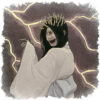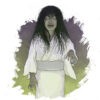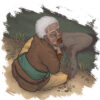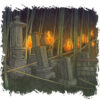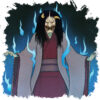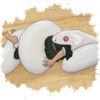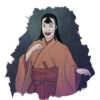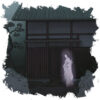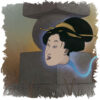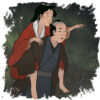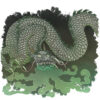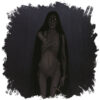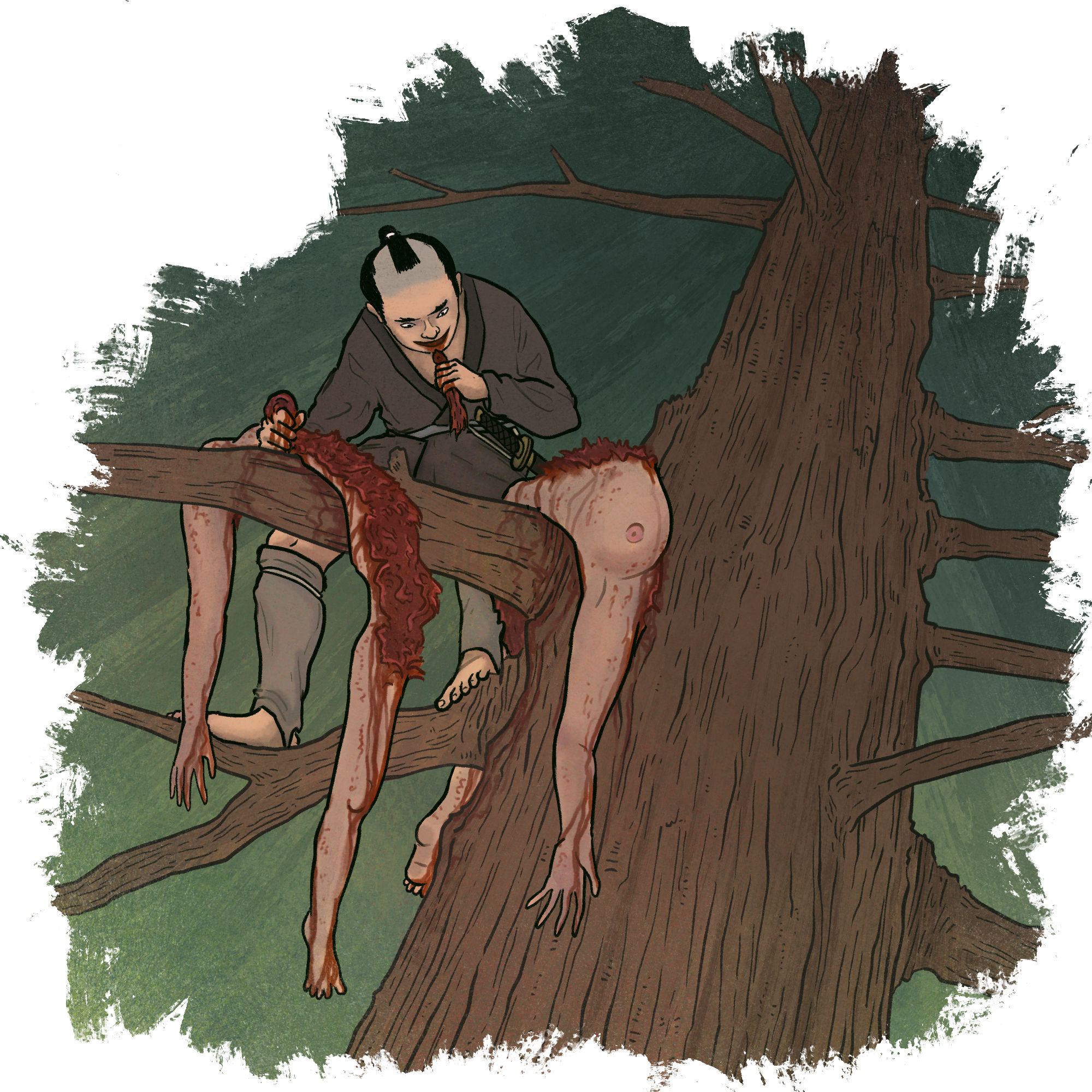Well we’ve made it. Tonight is Halloween, and thus the final A-Yokai-A-Day post for 2022. I hope you’ve enjoyed these thirty one stories from Shokoku hyakumonogatari. I saved a particularly creepy one for tonight, our last story. If you found them interesting, remember that you can continue to get illustrated yōkai stories in your inbox year-round if you become a Patreon supporter. That’s what allows me to continue my work of sharing Japanese folklore with the world.
It’s also one of the most terrifying descriptions of a ghost that I’ve read in so few words. For a book written in 1677, the horror in this one feels so fresh and vivid, and it’s easy to imagine it in a modern scary movie.
The Painted Corpse Wife of Bungo Province
There was a certain man in Bungo Province. His wife was seventeen years old and famous for her beauty, and the two of them had a great relationship. During pillow talk, this man always said to his wife, “If you die before I do, I will never marry again.”
Yet, one day his wife became sick with a cold and died. In her last moments she said to her husband, “If you feel pity for me, then there is no need to bury me or cremate me. Instead, rip open my bellow and take out my innards, fill me with rice, then paint my body with fourteen coats of lacquer. Build a small chapel and place me inside, put a gong in my hand, then come pray before me every morning and evening.” Then she died.
The man complied with her final wishes. He opened her belly, filled her with rice, coated her with lacquer, built a chapel and placed her inside. For two years he prayed before her and did not take a new wife. However, a friend eventually convinced him to remarry.
The new wife repeatedly begged the man for a divorce. He tried this and that to soothe her, but she would not listen. “In any case, I will not stay in this house with you,” she said, and then left.
Afterwards, the man took wife after wife, but every one of them said the same thing, and returned back to their families. Thinking this was no ordinary thing, the man made prayers and offerings in an attempt to exorcise whatever curse was following him. Then he married yet another woman.
This time, it seemed as if his prayers were answered. The new wife stayed with him for fifty or sixty days without incident.
Then, one evening when the man was out with his friends, his wife and her handmaids gathered in the house to talk. Late at night, the sound of a hand gong could be heard out front. Everyone grew nervous, and as they listened the sound grew closer and closer, until they could hear it inside of the house. Terrified, the women tightened the lock on the door and shrunk back. They heard the sound of the sliding doors being opened one after the other, until there was only a single door between them. Then a woman’s voice said:
“Open this door.”
But everyone was too afraid to say anything.
The voice spoke again: “It doesn’t matter whether you open the door or not. I will leave for now. But I will come back again and speak with you. And whatever you do, do not tell my husband of my visit. If you tell him, you will lose your life.”
Then the gong rang, and the woman left.
It was such a terrible experience that they had to have a peek though the doors. They saw a woman of seventeen or eighteen, utterly black from her face to her feet, carrying a hand gong. The women were so scared that they could hardly wait for the husband to come home. When he did, however, they remembered the woman’s words. They spoke nothing of that night to him.
However, the next day, the man’s wife told him that she wanted a divorce.
The man was perplexed. “Why all of a sudden do you say such a thing?”
The woman explained everything that had happened the previous night. The husband dismissed her concerns, saying, “That must have been a kitsune.”
“Please give me a divorce!” she said.
The husband tried this and that and eventually soothed her nerves, but after four or five days he had to leave on business again. That night, the sound of a hand gong was once again heard outside the house.
“Oh no!” thought the wife, and she locked the doors.
Then a woman’s voice said, “Open this door. Open it.”
The wife and her handmaids trembled in fear. Then all of a sudden, the handmaids became extremely drowsy, and they all fell asleep in unison. Only the wife was left awake. The sliding doors slid open one by one. Peeking into the next room, the wife saw the woman standing there, painted black, her long hair reaching all the way to the floor and shaking back and forth. She was glaring right at the wife.
“Aah, what a pity. I told you before not to tell my husband of my visit, but you told him so soon afterwards! You detestable wretch!”
As soon as she said this, she leaped at the wife, twisted her neck right off, and left.
The husband heard that something had happened, and he returned home. When he asked what happened, the wife’s handmaids told him everything.
The husband was shocked. He went to the chapel out front and looked inside. There, in front of the lacquered body of his first wife, was the head of his current wife.
“Oh, you bitch!” he said. And he pulled the painted woman down from the altar.
The blackened woman opened her eyes and bit open her husband’s throat, killing him.




